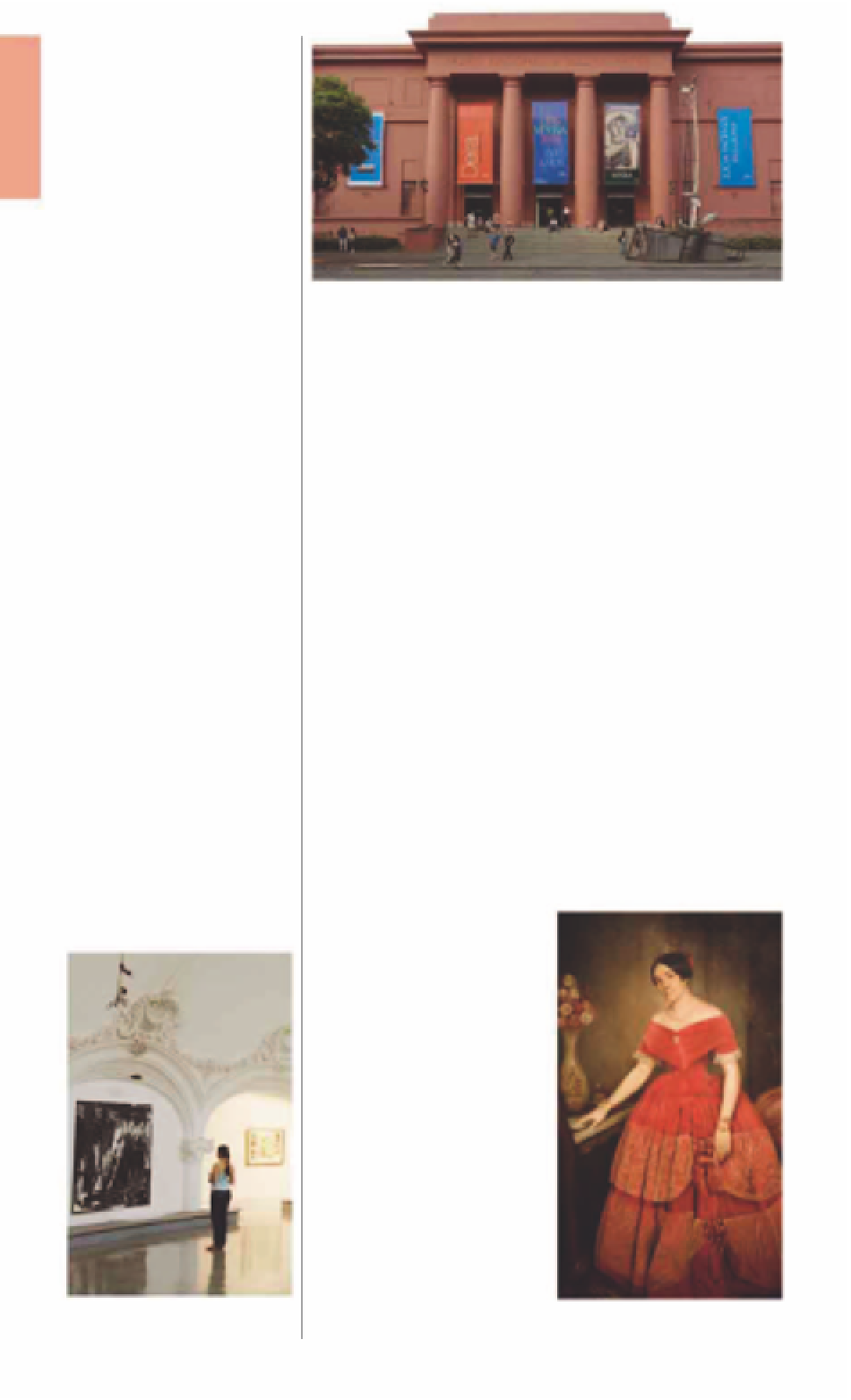Travel Reference
In-Depth Information
6
Palais de Glace
Posadas 1725.
City Map
3 D2.
Te l
(011) 4804-1163.
@
17, 61, 62, 67,
92, 124, 130.
Open
noon-8pm Tue-
Fri, 10am-8pm Sat & Sun.
8
5pm &
6pm Sat & Sun (book ahead).
7
∑
palaisdeglace.gob.ar
Officially known as the National
Palace of the Arts, the Palais
de Glace (Palace of Ice) was
inaugurated in 1910. It was
initially designed to hold an ice-
skating rink, modeled closely on
Paris's own Palais de Glace.
The ice-rink idea did not prove
popular and in 1915 the palace
became a tango ballroom, and
during the 1920s it was the city's
key party venue. In 1931, the
building was donated to the Fine
Arts Institute and became an art
gallery. From 1954 to 1960 it was
used as a television studio for the
channel Canal Siete. The palace
was later converted back into an
art gallery and declared a
National Monument in 2004.
The Palais de Glace, with its
crowned columns and vaulted
dome, can be enjoyed as one of
the finest examples of Parisian-
style architecture in the city. It is
also an important exhibition
space for national and inter-
national shows which include
photography, paintings, and
sculpture. The palace hosts the
annual Antiques Fair organized
by the Association of Friends of
the National Museum of
Decorative Arts. It is still held in
high regard for its historic
contribution to tango.
The severe Neo-Classical façade of Museo Nacional de Bellas Artes
7
Museo Nacional
de Bellas Artes
Ave del Libertador 1473.
City Map
2
C2.
Te l
(011) 5288-9900.
@
67, 93,
130.
Open
12:30−8:30pm Tue−Fri,
9:30am−8:30pm Sat, Sun, & hols.
8
12:30pm Tue, Thu, & Fri, 2pm Sat
(English).
7
=
∑
mnba.org.ar
art, including Antonio Berni,
Xul Solar, Leon Ferrari, Raquel
Forner, Prilidiano Pueyrredón,
Fernando Fader, and Antonio
Seguí, represented by some of
their best-known and most
influential works. The influences
of European art are vividly
apparent in the Argentinian
works, but the divergences the
artists make to illustrate the
local viewpoint are interesting.
For example, a painter like Berni
used the techniques of social
realism to specifically portray his
own unique
criollo
(mixed race)
environment. The museum is
gradually shaking off its
reputation as a cautious,
hidebound institution. In 2004,
it opened its first branch in the
Patagonian city of Neuquén,
and in 2005 it added a perma-
nent display of pre-Columbian
art. Audio tours and a well-
stocked bookshop have
helped make it an excellent
modern museum.
In 1932, Argentina's National
Fine Arts Museum moved to
occupy one of the city's major
waterworks facilities, where it
has remained ever since. The
interior was completely
remodeled under the super-
vision of Alejandro Bustillo, one
of the country's greatest archi-
tects. The Neo-Classical façade
has changed little since the
original facility opened in 1870.
Apart from some subsequent
expansion and renovation work,
the museum, with its spacious
and well-lit salons, remains
much as it was when President
Justo cut the ribbon in 1933.
Currently the museum
comprises 34 exhibition
rooms divided over three
sprawling floors. There are
more than 12,000 works in the
permanent collection, although
only 700 can be displayed at
any one time. The specialist
art library, also open to the
public, contains more than
150,000 volumes.
The collection housed in the
Museo Nacional de Bellas Artes
is one of the most outstanding
in South America. On display are
works by many of the canonical
figures in art history, including
Goya, Rubens, Rembrandt,
El Greco, Rodin, Klee, Renoir,
Degas, Picasso, and Toulouse-
Lautrec. The exhibits also
include some of the most
famous names in Argentinian
The elegant space of the Palais de Glace
now used for art exhibitions
Retrato de Manuelita Rosas
(1840) by
Prilidiano Pueyrredón
For hotels and restaurants see pp278-83 and pp288-99



































